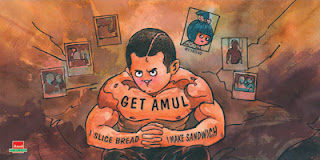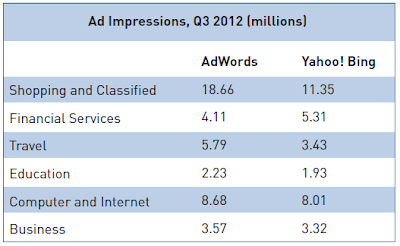In the month of 2013, Blackberry announced that BBM would soon be available for Android and iPhone users. It will be the first multi-platform version of the instant messaging app which has 60 million active monthly users.
By October, over 6 million people signed up for 'information about BBM' at bbm.com. Over 2 million people found out ways to download the BBM application on their Android and iPhone devices unofficially using 'creative ways', as Blackberry would like to say.
As of November numbers, the news is that BBM on Android and iPhone is a big hit. It has been downloaded over 20+ million times. BBM's engagement of around 40 minutes per user is also higher than other multi-platform messaging platforms such as Tango and LINE.
It is a Branding Harakiri.
All the above sounds great. But are we missing the forest for the trees? Around 2008, almost all my friends had a blackberry, and all of them swore by BBM. In 2013, only very few have remained loyal to Blackberry, but all of them still swore by BBM. Only change is that they have added WhatsApp as an alternative to BBM for friends without Blackberry phones.
Still they were the privileged few to enjoy BBM service. Those few users are around 60 million. With BBM becoming multi-platform, these loyal 60 million users would surely feel a pinch in losing their exclusivity. This is something the Blackberry brand managers have missed in their enthusiasm to get into the instant messaging marketplace. They seem to have momentarily forgotten that they are primarily a device company, at least in the minds of the consumers.
Messaging Marketplace is fiercely competitive and commoditized.
In the instant messaging marketplace, WhatsApp needs little introduction since it is arguably the world’s most popular messaging application with more than 300 million people using it each month. It is number one in the biggest mobile app market, Europe boasting a weekly engagement stats of a whopping 160 minutes per user. It has reached the critical acceptance level to charge $0.99 for a one-year subscription - although it is free for the first year.
There are over 22 mobile messaging applications in the market such as GroupMe, Line, WeChat, MessageMe, Kik, Tango, Hike etc. Kik is one of the few messaging apps that doesn’t require you to provide your phone number. It is therefore in tablets that does not have a SIM card. There are also a few regional apps like the KakaoTalk of Korea. Then we have the Facebook messenger app that can't be ignored with its mega user base.
Surprisingly, Blackberry has decided to shift focus from its device business to this crazy competitive marketplace which is just about to get commoditized. I can't understand the branding and business motive behind this costly move. It is not only costly in terms of capital and operational investments, but also costly in terms of dis-illusioning its loyal consumer base.
Where is the revenue?
Blackberry had announced in September 2013 that it is planning to cut 4,500 jobs, or 40% of its worldwide workforce, in an attempt to staunch huge losses. The smartphone maker said that it anticipated a loss of as much as $995m (£621m) when it reports its second-quarter earnings.
Blackberry's Chief Executive Thorsten Heins said: "We are implementing the difficult, but necessary operational changes ...to address our position in a maturing and more competitive industry, and to drive the company toward profitability."
This is where I have a disconnect. How is multi-platform BBM, a drive towards profitability? What is the revenue model in this instant messaging marketplace? Putting ads onto the app is unthinkable, as such intrusions are taken very negatively by the generation of today. Subscription revenue is the only likely revenue model, which can be dangerous in a commodity market. Facebook has shied away from putting a subscription revenue model even then they had over a billion users hooked.
Games, video, digital stickers, music sharing are probably the other upcoming revenue generators, but that space has been already keenly fought by other players. Of the $58m, LINE made in sales in the first quarter of 2013, half came from selling games and 30%, or roughly $17m, from sales of its 8,000 different stickers. With KakaoTalk, which is thought to be on 90% of all smartphones in South Korea, registered users can choose from more than 100 games they can play with one another, and games alone helped the company generate $311m in sales in the first half of 2013.
WhatsApp has clearly identified communications as its mainstay. It doesn't intend to dilute its proposition by offering everything possible in the messaging environment. That is perhaps the reason of its ever increasing user base. It is profitable by its sheer subscription revenue.
I am not clear what is the revenue thought behind making this multi-platform BBM? How does a multi-platform messaging app sell a Blackberry phone or its services? It will perhaps erode the user base whose only reason for a blackberry phone is BBM. Whatever the revenue model is, it is surely going to be one difficult business to sustain for Blackberry.
Conclusion:
Both from branding and business perspective, I believe that Blackberry has got it wrong. It is wasting its energies in uncertain domains, rather than focus on the device division creating more exclusive Blackberry services like the BBM for its loyal retail and corporate customer base.
By October, over 6 million people signed up for 'information about BBM' at bbm.com. Over 2 million people found out ways to download the BBM application on their Android and iPhone devices unofficially using 'creative ways', as Blackberry would like to say.
As of November numbers, the news is that BBM on Android and iPhone is a big hit. It has been downloaded over 20+ million times. BBM's engagement of around 40 minutes per user is also higher than other multi-platform messaging platforms such as Tango and LINE.
It is a Branding Harakiri.
All the above sounds great. But are we missing the forest for the trees? Around 2008, almost all my friends had a blackberry, and all of them swore by BBM. In 2013, only very few have remained loyal to Blackberry, but all of them still swore by BBM. Only change is that they have added WhatsApp as an alternative to BBM for friends without Blackberry phones.
Still they were the privileged few to enjoy BBM service. Those few users are around 60 million. With BBM becoming multi-platform, these loyal 60 million users would surely feel a pinch in losing their exclusivity. This is something the Blackberry brand managers have missed in their enthusiasm to get into the instant messaging marketplace. They seem to have momentarily forgotten that they are primarily a device company, at least in the minds of the consumers.
Messaging Marketplace is fiercely competitive and commoditized.
In the instant messaging marketplace, WhatsApp needs little introduction since it is arguably the world’s most popular messaging application with more than 300 million people using it each month. It is number one in the biggest mobile app market, Europe boasting a weekly engagement stats of a whopping 160 minutes per user. It has reached the critical acceptance level to charge $0.99 for a one-year subscription - although it is free for the first year.
There are over 22 mobile messaging applications in the market such as GroupMe, Line, WeChat, MessageMe, Kik, Tango, Hike etc. Kik is one of the few messaging apps that doesn’t require you to provide your phone number. It is therefore in tablets that does not have a SIM card. There are also a few regional apps like the KakaoTalk of Korea. Then we have the Facebook messenger app that can't be ignored with its mega user base.
Surprisingly, Blackberry has decided to shift focus from its device business to this crazy competitive marketplace which is just about to get commoditized. I can't understand the branding and business motive behind this costly move. It is not only costly in terms of capital and operational investments, but also costly in terms of dis-illusioning its loyal consumer base.
Where is the revenue?
Blackberry had announced in September 2013 that it is planning to cut 4,500 jobs, or 40% of its worldwide workforce, in an attempt to staunch huge losses. The smartphone maker said that it anticipated a loss of as much as $995m (£621m) when it reports its second-quarter earnings.
Blackberry's Chief Executive Thorsten Heins said: "We are implementing the difficult, but necessary operational changes ...to address our position in a maturing and more competitive industry, and to drive the company toward profitability."
This is where I have a disconnect. How is multi-platform BBM, a drive towards profitability? What is the revenue model in this instant messaging marketplace? Putting ads onto the app is unthinkable, as such intrusions are taken very negatively by the generation of today. Subscription revenue is the only likely revenue model, which can be dangerous in a commodity market. Facebook has shied away from putting a subscription revenue model even then they had over a billion users hooked.
Games, video, digital stickers, music sharing are probably the other upcoming revenue generators, but that space has been already keenly fought by other players. Of the $58m, LINE made in sales in the first quarter of 2013, half came from selling games and 30%, or roughly $17m, from sales of its 8,000 different stickers. With KakaoTalk, which is thought to be on 90% of all smartphones in South Korea, registered users can choose from more than 100 games they can play with one another, and games alone helped the company generate $311m in sales in the first half of 2013.
WhatsApp has clearly identified communications as its mainstay. It doesn't intend to dilute its proposition by offering everything possible in the messaging environment. That is perhaps the reason of its ever increasing user base. It is profitable by its sheer subscription revenue.
I am not clear what is the revenue thought behind making this multi-platform BBM? How does a multi-platform messaging app sell a Blackberry phone or its services? It will perhaps erode the user base whose only reason for a blackberry phone is BBM. Whatever the revenue model is, it is surely going to be one difficult business to sustain for Blackberry.
Conclusion:
Both from branding and business perspective, I believe that Blackberry has got it wrong. It is wasting its energies in uncertain domains, rather than focus on the device division creating more exclusive Blackberry services like the BBM for its loyal retail and corporate customer base.










